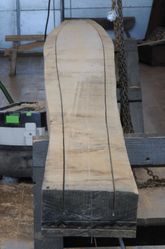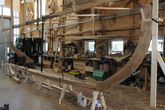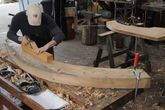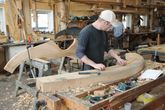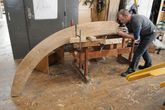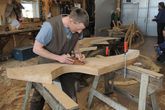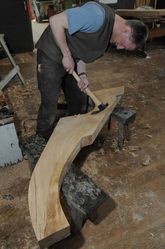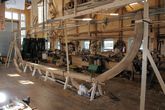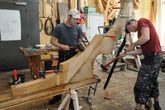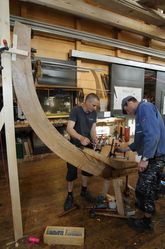Keel, stem and sternpost
Here, you can follow the process involved in building a 29 foot eel drifter
Click on the photos to enlarge them...
The line that the rabbet in the stem should follow is drawn up using a thin fairing batten, a type of flexible ruler. In this way, it is easy to draw both crooked and even curves.
The rabbet is a notch or channel in the stem. The planks will be adjusted to sit fast in the rabbet, before being attached with ship's nails.
The sternpost is specially designed and is different to that on the old drifter, which was 'only' built as a sail boat. This boat will also have an inboard motor and therefore provision must be made to allow an axel to pass through the sternpost, and there must also be room for a propellor.
Simon adjusts and planes the surface.
